Financial Accounting
01 Financial Statements
学习目标
- Explain why accounting is the language of business.
- Explain and apply underlying accounting concepts, assumptions and principles.
- Apply the accounting equation to business organizations.
- Evaluate business operations through the financial statements.
- Construct financial statements and analyze the relationships among them
- Evaluate business decisions ethically .
学习资源
ifrs.org
iasplus.com
迪士尼的例子
合并利润表
why accounting is the language of business
measure , process data into reports , communicates results to decision makers.
who use accounting
two kind of accounting
- financial accounting . outside to : investors , creditors , government agencies , public
- managerial accounting. inside . budgets , forecasts , projections.
the various forms of business organization and the different
Proprietorship 个体户,Partnership 合伙制,LLC 有限公司,Corporation 股份公司
owners and 'personal liability of owners for business debts' is different
corporation double taxation : corporation pays income tax , stockholders taxed on dividends(股息红利).
china have 3 accounting system
- one for public
- one for smalll & medium
- one for
Underlying accounting concepts and assumptions , principles.
两种国际专业标准
GAAP : 美国的 Formulated by the financial accounting standards board (FASB)
IFRS : International Financial Reporting Standards
Accounting Assumptions & Principles
Relevance , Faithful .
Entity Assumption , Continuity Assumption, Historical Cost principle , Stable Monetary unit assumption
资产应该在他们购买的日期以真实成本被记录。货币的购买力应稳定。
Accounting equation
Assets = Liabilities + owner's equity (stockerholder's equity)
会计名词
revenues , expenses, dividends 股利,
net income , net earning 净盈余, net profit 净利润,net loss 净亏损。
Assets
- cash , cash equivalents
- Inventories
- Account receivable
- Property , Plant , equipment
Liabilities
- Accounts payable
- income taxes payable
- long-term debt
Owner's Equity
corporation's equity is called stockholders' equity and it has two parts:
- Paid-in capital 实收资本 (common stock)
- Retained earning 留在收益
- dividends: distribution of the company's earning to its shareholders.
'Revenues for the period' - 'Expense for the period' = 'Net Income'(净收益 )
'beginning balance of the retained Earning' +/- 'Net Income' - 'Dividends for the period' = 'Ending balance of Retained earnings'
Dividends (股息,红利):distribution of assets to the stockholders.
Evaluate the business operations through the financial statements.
income statement, Retained Earning , Balance Sheet , Cash Flows . 销售表,收益表,财务平衡表,现金流量表。
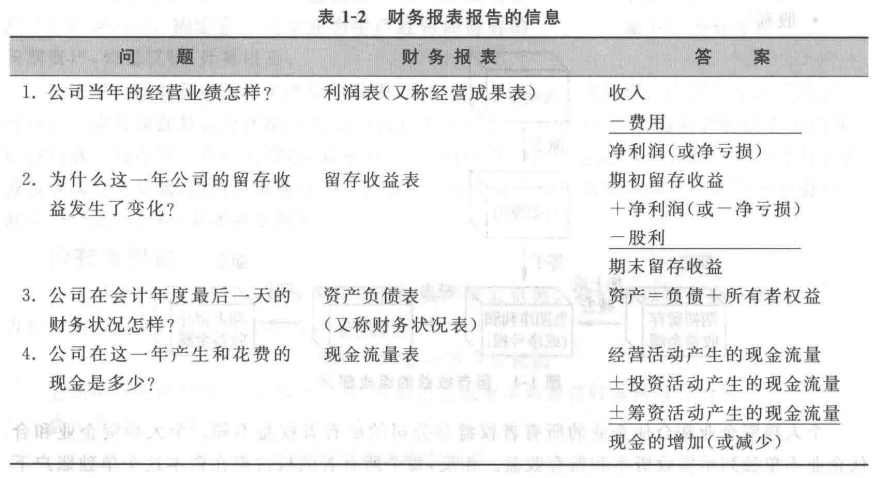
合并利润表
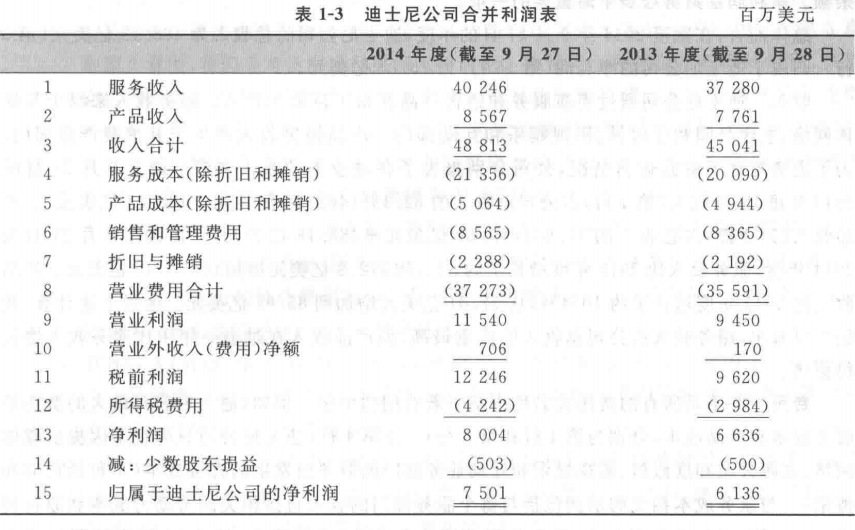
留存收益表

资产负债表
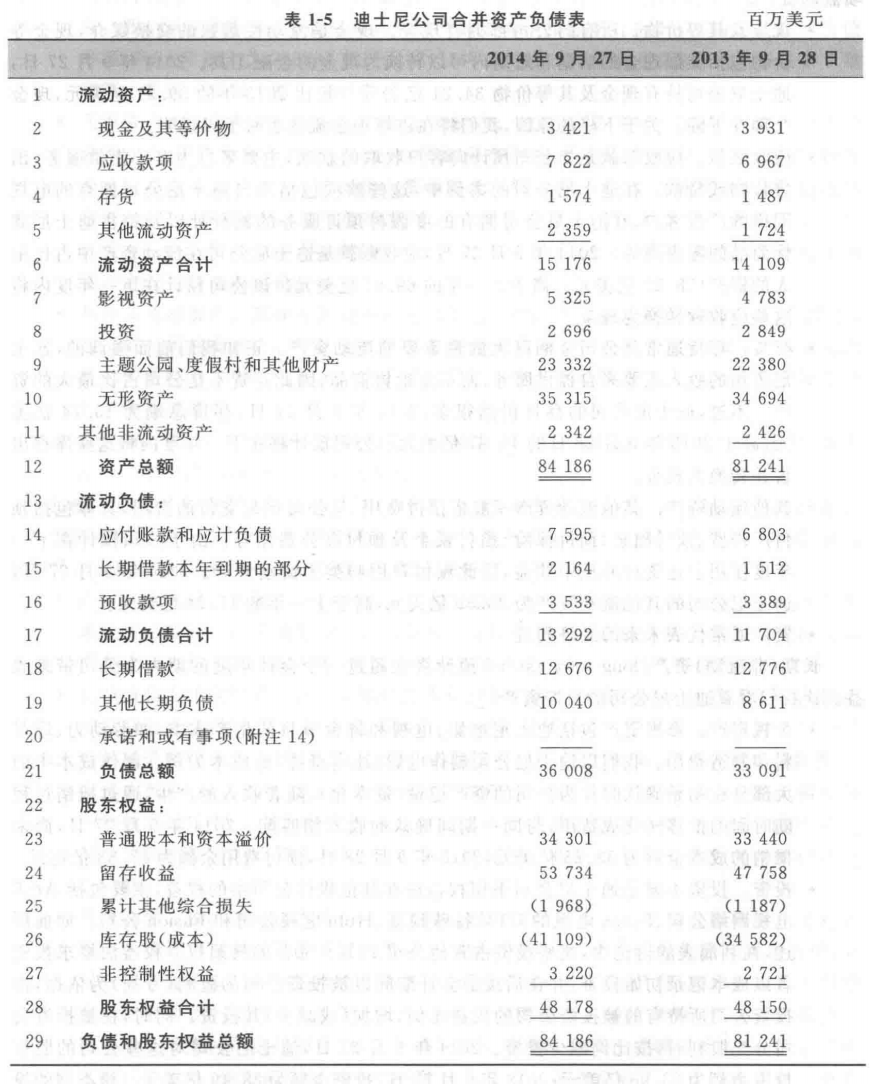
现金流量表
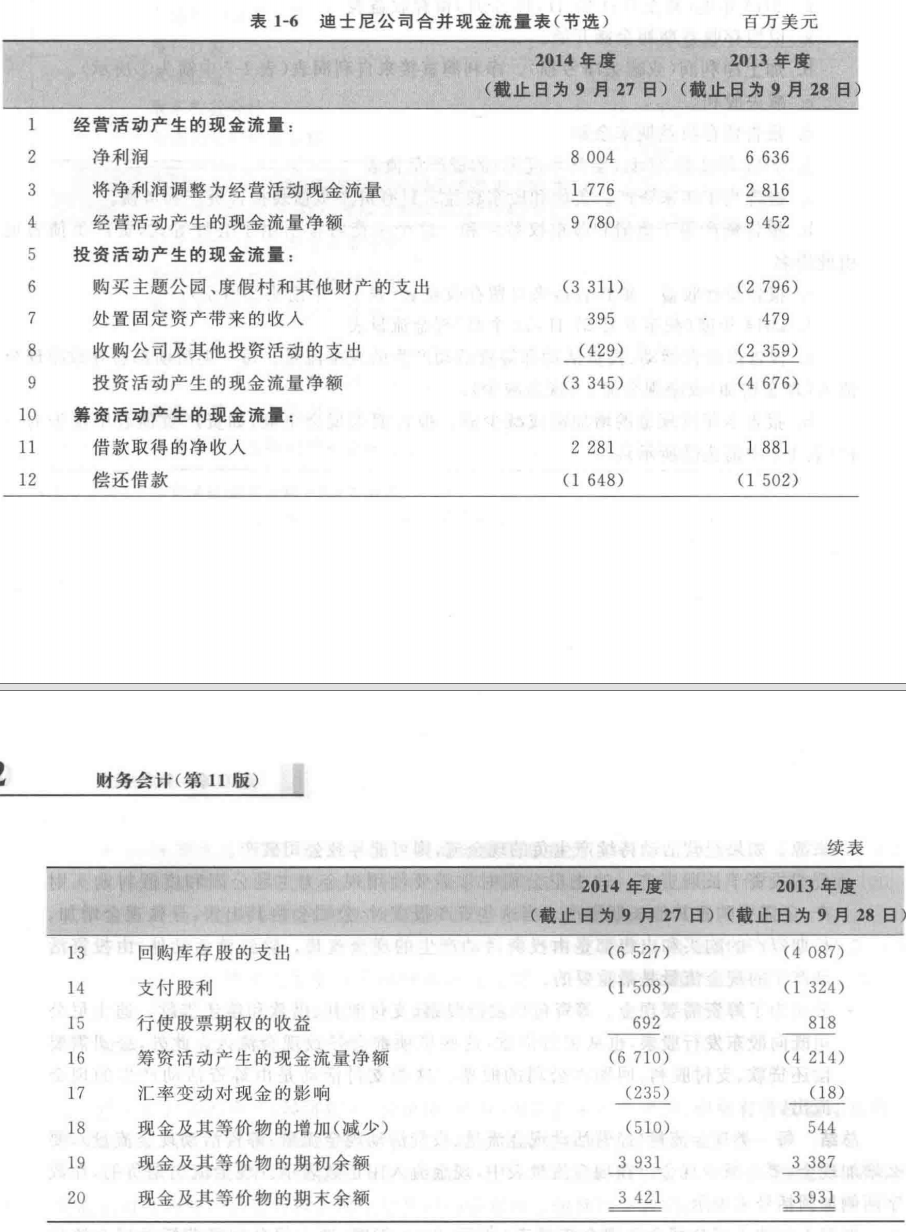
经营活动,投资活动,筹资活动。
评价一个公司,决策者关注什么
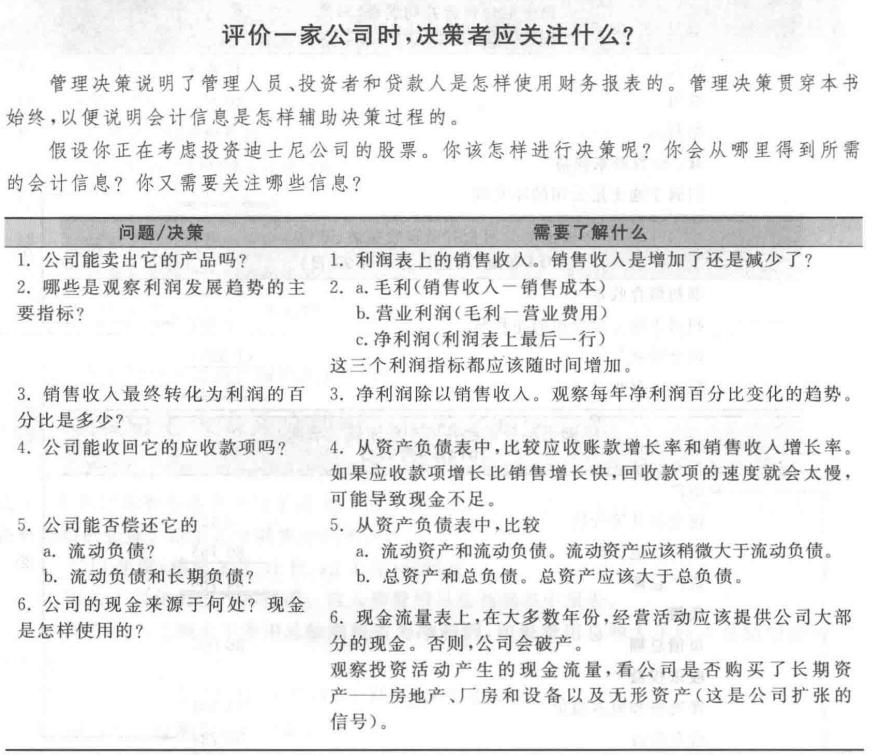
Cash Flow
- operating activities
- invest activities
- financing ... (pay or borrowing)
Relations among the financial statements
各报表之间的关系。
Evaluate business decision ethically
Economics , Legal , Ethical .
02 Transaction analysis
learning objectives
- what is a transaction
- define accounting and list and differentiate between different types of accounts
- show the impact of businesses transactions on the accounting equation
- analyze the impact of business transaction on accounts
- record transaction in the book
- Construct and use a trial balance
1. what is a transaction
a transaction is any event has a financial impact on the business and can be measured reliably .
每一项交易包括两个方面:付出了什么,相应地收到了什么。
会计循环: 确认交易, 分析其对会计等式的影响 , 在日记账中记录交易, 将其过到分类账中。
2. define accounting and list and differentiate between different types of accounts
the accounting equation express the basic relationship of accounting
an account is the record of all the changes in a particular asset , liability , stockholders' equity during a period .
Assets:cash ,revenue , accounts receivable , Inventory , 预付费用,investments , property, Plant, Equipment.
Liabilities :accounts payable , notes payable , accrued liabilities( liabilitity for an expense you have not paid ) .
Stockholders' Equity: Common stock , Retained Earning( cumulative net income minus net loss and dividends over the company's life) , Dividends, Revenues , Expense .
3. show the impact of business transactions on the accounting equation
4. analyze the impact of business transaction on accounts
T-Account , left : debit ; right : credit .
经济交易的会计处理。所有的经济交易都包括:付出什么,得到什么。因此会计是基于复式记录体系而建立的,它记录交易对经济主体的双重影响。double entry system , records dual effects of each transaction.
the T - Account
资产的增加记在左边,减少记在右边。
负债和所有者权益增加记在右边,减少左边。
5. record transaction in the books (日记账和分类账)
journal & ledger
日记账到分类账称为 过账。
6. construct and use trial Balance
lists all accounts with their balances.

账户表(chart of accounts)

03 Accrual Accounting & Income
1 explain how accural accounting differs from cash-basis accounting
权责发生制和收入计量,会计期间 time-period concept
权责发生制可以避免一些在计付现结下的道德问题。
2 apply the revenue and expense recognition
when to record revenud , what amount.
expense recognition principle. expense and revenue.
3 adjust the accounts
Deferrals , Depreciation , Accruals (the opposite of a deferral)
prepaid expense are assets .
accumulated depreciation ---> Depreciation expense
unearned service revenue . 没有收入的费用发生时确认。
4 construct the financial statements
基于流动性对资产进行分类
账务报表的格式
资产负责表格式: 报告式,账户式
利润表格式: 单步式,多步式。
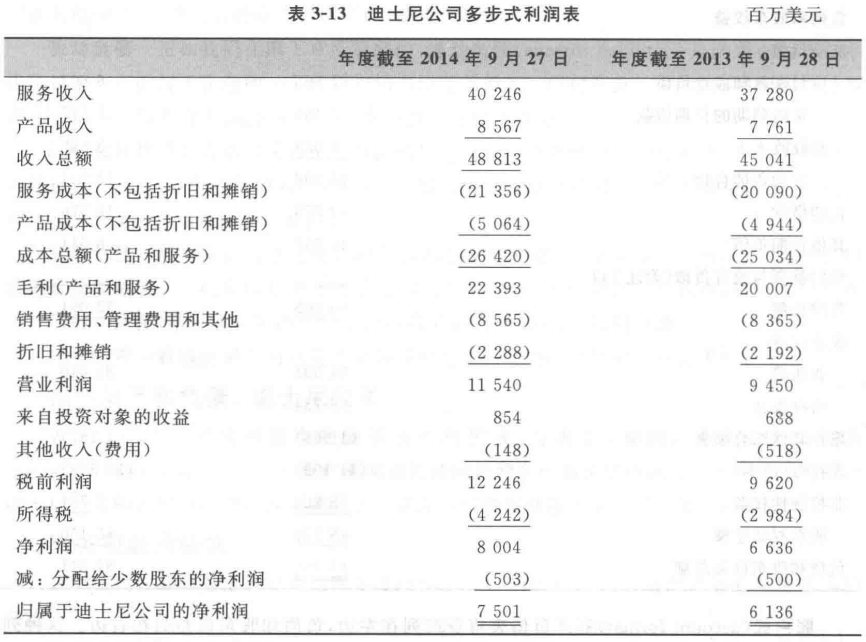
5 close the books (结账)
Prepares the accounts for the next period. close temporary accounts. 永久性账户(不做结账处理,金额延续)
closing entries 结账分录合收入类账户和费用类账户的余额归零。这与在比赛结束后记分牌归零是同样的道理。
6 analyze the evaluate a compan's debt paying ability
current ratio(流动比率) : current assets / current liabilites 1.2~1.5 is good
Debt ratio: total liabilities / total assets
使用营运资本净额,资产负债率,流动比率,评价债务偿付能力。
流动比率
- 流动比率大于1通常被认为是良好的,这意味着公司有足够的流动资产来覆盖其流动负债。
- 流动比率低于1可能表示公司面临短期偿债压力,但也要结合行业标准和其他财务指标一起分析。
- 流动比率过高可能意味着公司持有过多的现金或流动资产,这可能不是最有效的资本使用方式。
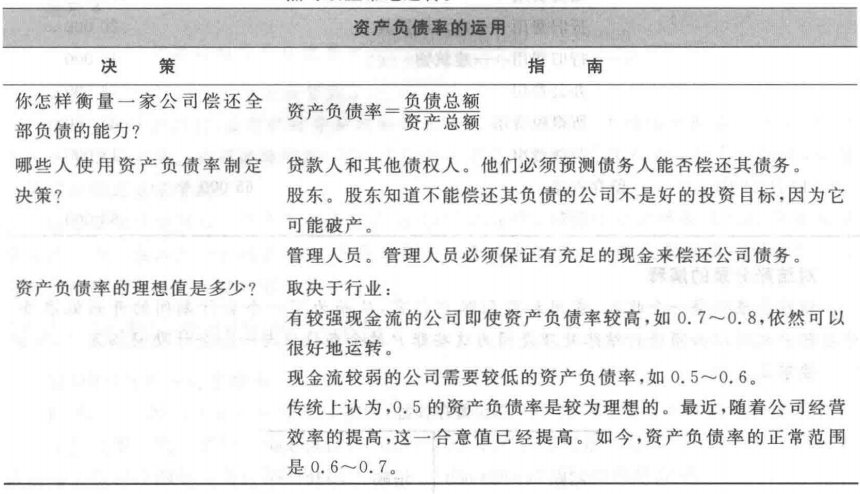
费用
05 短期投资与 receivable
cash flow are solely payment of principal and interest . 本金&利息。
Amortised cost 均摊成本
FVTPL fair value throuth profit loss
FVOCI Fair value through other comprehension income
06 Inventory & cost of good sold
Depreciation
3种折旧方法: 直线,单元,加速折旧。
Depletion 耗尽
为什么无形资产要摊销? 有时间周期。
Cost vs Expense
成本和特定资产相关。
Finance Equity method < 20%
subsidary > 50%
invesment in associate
08 long term investments & time-valued of money
10 StockerHolders's Equity
the feature of a corporation
stockerholder's rights
class of stock
- common stock
- preferred stock
par-value vs no-Par value
account for the issuance of stock
treasury 回购股票
compension stock 补偿股票
account for retain earning
dividends and splits
- declaration date
- date of record
- payment date
Liabilities
收入准则
金融准则
保险准则
租赁准则
新型业务的兴起,商业模式的变化 。
判定融资租赁
- 金额
- 租期占寿命大于 75%
- 专有使用(转让成本极高)
- 产权转让极低成本,也可行。
经营租赁,融资租赁。
- 已识别资产
- 谁用
- 如何用
- 合同包含租赁 , 合同不包含租赁。